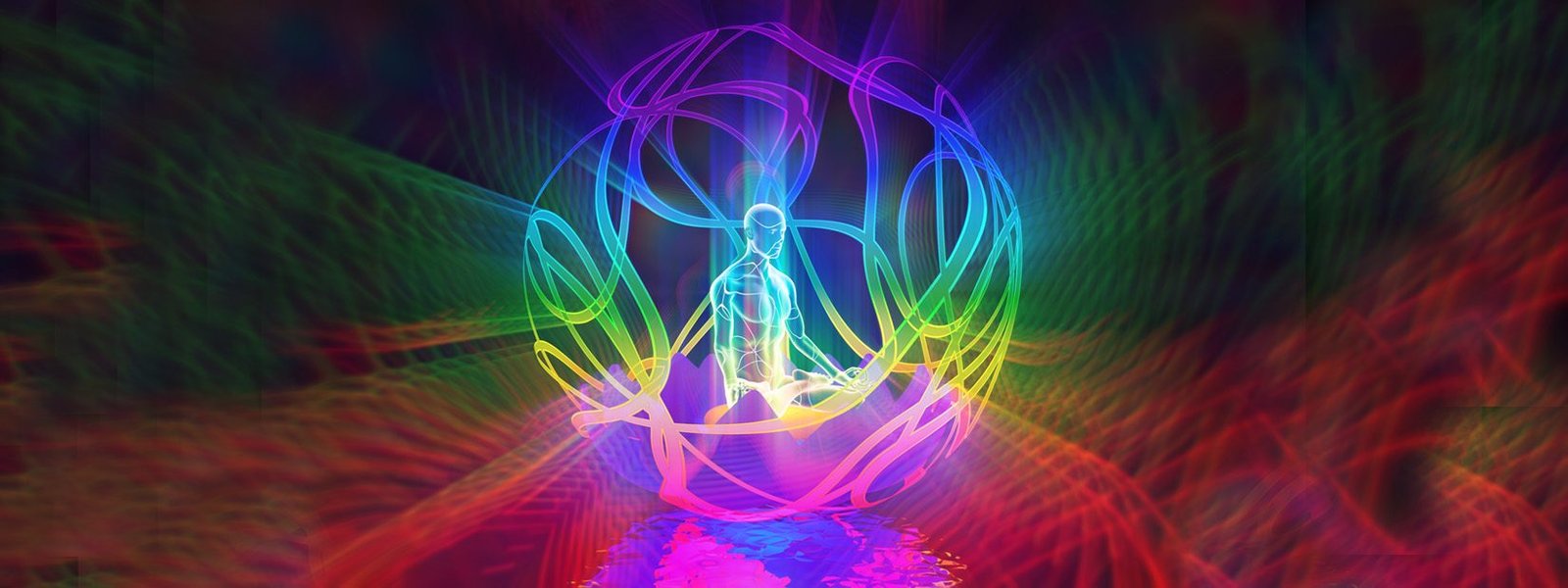The human aura is a field of energy that surrounds the body of humans, animals, plants, and even objects to some degree. It is said to reflect a person’s physical, emotional, and spiritual state. The aura extends a few inches away from your physical body and glows with many different colors and patterns. It contains within it, chakras, or psychic centers, through which energy enters and leaves it. Chakras allow energy to flow through the aura and subtle nervous system, which is a network of channels known as nadis connecting the chakras.
The human aura is composed of different colors, each of which has a different meaning. Being able to see the human aura can be beneficial in several ways. Being able to see your own aura can help you to become more aware of your own thoughts, feelings, and emotions. This can lead to increased self-understanding and self-acceptance.
Understanding and being able to see auras can also help you with other people. Seeing the auras of other people can help you to better understand their thoughts, feelings, and emotions. This can lead to improved communication and relationships. You know, that when you see certain colors surrounding someone, what their overall mood is well before they speak their first words to you.
Being able to see aura fields can help you to develop your intuition so you to make better decisions. Being able to see the aura can help you to heal yourself and others too. This is because the aura is said to be connected to the body’s energy system.
Learning to read the aura is a valuable tool for self-awareness, communication, intuition, and healing. And it’s very easy to learn.
First, find a quiet place where you can relax and focus. Next, find a person who is willing to let you practice on them. You can also practice on your pet, and I find that very easy to do while my dog is napping. Even plants have an aura. Stand or sit facing the person or object and take a few deep breaths to calm your mind.
Step 1: Get about 10 feet away from the person or object you are reading. Make sure their background is either white or very light, or black or very dark. Natural light is always preferred but soft inside light works too. Just not too bright or too dark.
Step 2: Focus on one part of the person or object then let your eyes go kind of soft and unfocused. Start paying attention to your peripheral view and that’s where you will begin to see an outline in under 3 minutes. Just kind of notice but don’t focus or concentrate too hard on anything. Just let it come.
Step 3: When you begin to see that shadowy outline around the person’s body, stay relaxed and don’t look directly at the outline. Just see it in your peripheral view. You will begin to see some color and that is the aura field. With practice you will begin to see more than one color around somebody, and you can see the colors as their thought patterns change too.
The colors in the human aura field are said to represent different aspects of a person’s physical, emotional, mental, and spiritual health. Each color has its own unique meaning, and the overall appearance of the aura can provide insights into a person’s current state of being.
Here is a general overview of the meanings of some of the most common aura colors:
- Red: Red is associated with physical energy, passion, and vitality. A strong red aura indicates a person who is healthy and active, while a weak red aura may suggest fatigue or illness.
- Orange: Orange is associated with creativity, enthusiasm, and joy. A strong orange aura indicates a person who is optimistic and full of life, while a weak orange aura may suggest feelings of sadness or depression.
- Yellow: Yellow is associated with intellect, communication, and learning. A strong yellow aura indicates a person who is intelligent and curious, while a weak yellow aura may suggest feelings of insecurity or anxiety.
- Green: Green is associated with love, compassion, and healing. A strong green aura indicates a person who is kind and caring, while a weak green aura may suggest feelings of jealousy or resentment.
- Blue: Blue is associated with intuition, spirituality, and peace. A strong blue aura indicates a person who is wise and compassionate, while a weak blue aura may suggest feelings of fear or worry.
- Indigo: Indigo is associated with psychic ability, creativity, and compassion. A strong indigo aura indicates a person who is gifted with psychic abilities, while a weak indigo aura may suggest feelings of isolation or loneliness.
- Violet: Violet is associated with enlightenment, wisdom, and spiritual growth. A strong violet aura indicates a person who is spiritually evolved, while a weak violet aura may suggest feelings of confusion or uncertainty.
It is important to note that the colors in the aura are not always static. They can change depending on a person’s mood, health, and environment. Additionally, each person’s aura is unique, and there is no one-size-fits-all interpretation of the colors.




